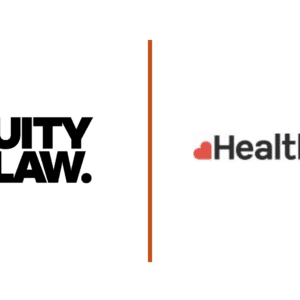Has A More Arm’s Length Approach To Inspection Led To An Increase In Low-Level Enforcement Action By The CQC?
Key Contact: Jon Lawley
Author: Jenny Wilde
There is a new dawn approaching in the form of the CQC’s Single Assessment framework. This brings all types of providers of health and social care services under the same inspection umbrella. As has now been widely publicised, since the pandemic, the CQC has long abandoned its regular schedule of inspection for all health and social care services. During the logistical challenges of COVID-19, inspections were triggered by perceptions of risk, related to any notifications received by the regulator or any third-party concerns or staff whistleblowing.
It would appear that the new, light touch risk-based approach struck a chord with the powers that be at the CQC and it has now been crystallised in the new, proposed inspection regime. This article does not propose to analyse this new system (as so much remains undecided and subject to change) however, what it will consider is what we know for sure – the CQC is becoming even more arm’s length and there will undoubtedly be an impact on providers, not necessarily to their benefit. So, whilst there could absolutely be benefits to this new system of regulation, it is important to consider and be alive to, the potential pitfalls.
Findings at inspection
The foundation of all CQC activity is the findings of an inspection. A risk-based system (i.e. one triggered by an adverse event or feedback) will, by its nature, go into an inspection looking for evidence to support the areas of concern that have been received, rather than looking for ‘Good’ (the CQC’s historical starting point).
Many providers have expressed concern with the apparent lack of scope for considering positive information about a registered service through the new provider portal.
A further risk of this more remote and negative approach is that of conclusions, informed by uncorroborated or incorrect evidence arising out of inspections carried out away from the provider setting. This could lead to knock-on effects in the form of negative inspection reports and low-level enforcement action such as the issuing of requirement notices and warning notices. In recent months the use of these types of notices has increased. The use of warning notices is particularly damaging because the CQC publishes a press release every time one is issued. This can lead to an incorrect narrative about a service being placed in the public domain and even adverse press coverage. For these reasons a robust response is important.
These types of enforcement actions can easily snowball into the CQC taking more serious action, so regulatory breaches captured during desktop reviews or inspections that result in a requirement or warning notice should not be ignored. It has been made clear that long and prosaic inspection reports will be a thing of the past. They will be replaced with more concise, bullet-pointed accounts of a service however, it is still vitally important to ensure that any factual inaccuracies contained with a draft report are challenged at the factual accuracy stage (once the CQC confirms that there will still be an opportunity to challenge factual accuracy).
What is a requirement notice?
The CQC will issue a requirement notice where a registered person is in breach of a regulation or has poor ability to maintain compliance with regulations, but people using the service are not at immediate risk of harm.
This type of enforcement action will require a report from the provider to show how it will comply with their legal obligations and must explain to the CQC the action the provider is taking or proposes to take to do so. Issuing a Requirement Notice notifies a provider that the CQC considers that they are in breach of legal requirements and need to improve care standards.
Failure to send the CQC a report in the timescale set out in the Requirement Notice is an offence and could lead to the CQC using its more serious enforcement powers.
Generally, enforcement notices are issued where:
• The provider is acting in breach of the regulations; the impact on people using the service is not immediately significant; and the CQC assesses that the provider should be able to improve its standards within a reasonable timeframe.
• The provider has no history of poor performance that gives rise to wider concerns.
It is essentially the beginning of the enforcement journey and providers should react in a proactive and meaningful way in order to avoid more significant consequences.
What is a warning notice?
Warning notices are issued when a service is deemed to have failed to comply with a legal requirement. This is more serious than a requirement notice. The CQC can also issue a warning notice for a past breach, which has been rectified if it considers the breach was serious enough.
A warning notice must be issued in writing, and must state:
- the relevant legal requirement that the registered person is not complying with;
- how the registered person did not comply or is continuing not to comply;
- and the timescale within which the registered person must comply.
There is no legally-set timescale for complying with a warning notice and the CQC can set any period which it considers reasonable. In accordance with its guidance, that period must reflect the degree of risk to the safety and welfare of people who use the service and must be a realistic and achievable timeframe.
Can a provider make representations against a warning notice?
It is crucial to remember that the CQC’s power to issue and publish warning notices is discretionary rather than a legal requirement. Although there is no statutory right of appeal against a warning notice, a registered person can make representations against it. Representations will be considered where:
- the notice contains a serious error;
- is based on inaccurate ‘facts’;
- has not been issued in accordance with the legal test;
- makes requirements that are not reasonable or proportionate; and/or
- it would be unfair to publish it.
Considering the CQC’s new, arm’s length approach to inspection, it is easy to contemplate how inaccurate facts could potentially arise out of reviews that take place without spending significant periods of time at a service, witnessing the delivery of care, or looking at service user outcomes in person.
Disproportionate judgments and conclusions can easily be reached by reviewing documentation out of context and without the assistance of the people working at the service. This is a problem that we see recurring again and again and that we anticipate will increase the more remote inspections are conducted.
Providers should feel empowered to challenge warning notices that they feel are unfair. Even if you do not dispute the facts in the warning notice it is still possible to make representations as to why it should not be published, for example, because it is not in the public interest or because it relates to a historic breach that has already been remedied. Evidencing that remedy in any representations could make the publication redundant.
These representations must be made in writing, within 10 working days of receipt of the notice so expedience and organised responses are key.
How can the CQC respond to representations of a warning notice?
Upon submission and review of representations, the CQC can either decide to uphold the representations or not uphold them.
If the representations are upheld then the outcome letter should formally record that the warning notice has been withdrawn. No further action or publication will be taken and there should be no mention of the warning notice in any relative inspection reports. The CQC should update any stakeholder organisations that have been informed that the warning notice has been issued.
If a warning notice contains an error that can be rectified, but the CQC considers that it is still appropriate to issue it, then it may decide to withdraw the first notice and issue another.
If the CQC decides not to uphold representations then it will write to the provider informing them that their representations have effectively been rejected. Historically, letters of this nature would detail why the submissions made by the provider were not accepted but we have seen an increase in very short letters simply notifying that the representations are not upheld – without further explanation. This can be incredibly frustrating if a strong and detailed case has been made, however, there is nothing that dictates how the CQC must respond.
Warning notices as a pre-cursor
Warning notices should be taken seriously and considered carefully. The CQC prides itself on using this enforcement action to show the public how it is operating and flexing its regulatory muscle. Providers should not be victims of the regulator’s need for press.
The CQC will rely on any failure to challenge warning notices as evidence that the provider agrees with the summary of the breach. This could lead to more serious problems such as a notice of proposal to vary conditions of registration or even cancel a registration altogether. Robust representations at the earliest opportunity are important especially if you have concerns about the basis on which the allegations have been made.
Conclusion
Some providers shy away from challenging the CQC out of fear that this will result in less favourable treatment at the next inspection. However, if you are dealing with an enforcement action that is disproportionate or based on misjudged or misinterpreted evidence, then you are already being treated unfavourably. Standing your ground and putting your opposition to the action on the record will demonstrate to the CQC that their evidence will be challenged and not simply accepted as fact.
It is important that providers feel empowered to ensure that the truest reflection of their service is what is released into the public domain.
If you need more information on the topics discussed, please reach out to the Corporate Healthcare Team.






